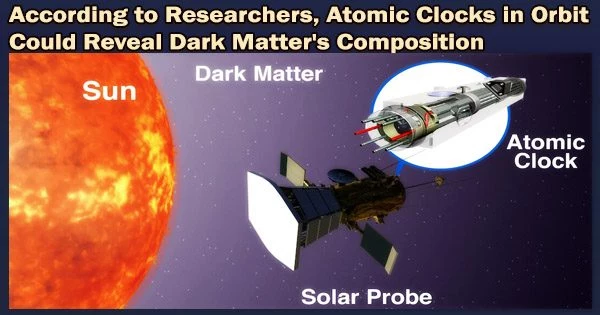According to a recent study published in Nature Astronomy, the key to understanding the nature of dark matter may be to examine an atomic clock aboard a spacecraft that is orbiting Mercury and is very close to the sun.
More than 80% of the material in the cosmos is made up of dark matter, yet despite decades of experimental efforts, it has so far eluded discovery on Earth.
The local density of dark matter, which controls the quantity of dark matter particles passing through the detector at any given time and, consequently, the experimental sensitivity, is a crucial factor in these searches.
This density can be significantly higher in some models than is typically expected, and dark matter may end up being concentrated in some areas more than others.
Atomic or nuclear searches are a significant subset of experimental searches because of their extraordinary sensitivity to dark matter signals. This is conceivable in part because oscillations in the very constants of nature are caused when dark matter particles with very small masses are present.
These oscillations alter the transition energies of atoms and nuclei in predictable ways, such as changing the electron’s mass or the electromagnetic force’s strength.
Long-distance space missions, including possible future missions to Mars, will require exceptional timekeeping as would be provided by atomic clocks in space. A possible future mission, with shielding and trajectory very similar to the Parker Solar Probe, but carrying an atomic clock apparatus, could be sufficient to carry out the search.
Joshua Eby
An international team of researchers, Kavli Institute for the Physics and Mathematics of the Universe (Kavli IPMU) Project Researcher Joshua Eby, University of California, Irvine, Postdoctoral Fellow Yu-Dai Tsai, and University of Delaware Professor Marianna S. Safronova, saw potential in these oscillating signals. They asserted that the density of dark matter may be very high in a certain area of the solar system, between Mercury’s orbit and that of the sun, which would result in exceptionally high sensitivity to the oscillating signals.
Atomic clocks, which work by meticulously measuring the frequency of photons emitted in transitions of different states in atoms, could detect these signals. Since the oscillations of the ultralight dark matter somewhat increase and reduce the photon energy, ultralight dark matter around the clock experiment could change those frequencies.
“The more dark matter there is around the experiment, the larger these oscillations are, so the local density of dark matter matters a lot when analyzing the signal,” said Eby.
Despite the fact that the precise density of the dark matter close to the sun is unknown, the researchers contend that even a somewhat insensitive search could yield valuable data.
Only knowledge of planet orbits constrains the density of dark matter in the solar system. There is essentially no limitation in the space between the sun and Mercury, the planet closest to it. Therefore, a measurement made from a spacecraft might swiftly reveal boundaries for dark matter in these models that are first in the world.
The technology to put their theory to the test already exists. Eby says the NASA Parker Solar Probe, which has been operating since 2018 with the help of shielding, has traveled closer to the sun than any human-made craft in history, and is currently operating inside the orbit of Mercury, with plans to move even closer to the sun within a year.
There are already plenty of other motivations for atomic clocks in space in addition to looking for dark matter.
“Long-distance space missions, including possible future missions to Mars, will require exceptional timekeeping as would be provided by atomic clocks in space. A possible future mission, with shielding and trajectory very similar to the Parker Solar Probe, but carrying an atomic clock apparatus, could be sufficient to carry out the search,” said Eby.
Details of their study were published in Nature Astronomy.
















